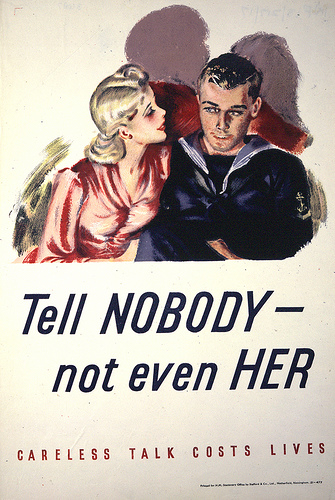Most writers know that they’re supposed to show instead of tell, but what exactly does that mean? In a nutshell, it means that rather than directly “telling” something to a reader, you provide a context for the reader to infer the information. The same thing gets conveyed except it’s through some sort of action, making it more interesting and engaging for the reader.
Showing vs. Telling Emotions
Here’s an example of a short scene that relies heavily on telling to convey emotions:
“What’s that?” Jake asked curiously.
“Nothing,” Kate said, acting suspicious.
“It has to be something!” Jake was getting frustrated.
Here is the same scene with showing:
“What’s that?” Jake asked, leaning sideways to peek behind her back.
Kate twisted her body, hiding the package behind it, and took a step back. “Nothing,” she said.
“It has to be something!” He stomped his foot and crossed his arms across his chest.
Notice how the second scene uses descriptions to bring across the characters’ emotions. The blatant emotion words (curiously, suspicious, frustrated) are not needed, because the action “shows” the audience how the characters are feeling without having to “tell” them.
Showing vs. Telling Concepts
This is an issue that’s common in fantasy and science fiction novels. Writers can have a tendency to “tell” how magical abilities work, what the dystopian government is like, how classes are divided, etc. It’s not always bad to tell these things if there’s no way to show them (Read How to Dump Info Without Info Dumping for more on how to do this effectively), but often telling these things comes across as lazy. For example:
Peter could create balls of energies in his hands. All he had to do was think about what he wanted to attack while moving his hands in a circle and the energy would appear as a glowing and pulsing orb. When it hit his victims, they would fall to their knees in agony.
The above paragraph is all telling. That same concept could be explained to the reader while Peter is putting his ability into use. This allows the reader to ascertain the information while being “shown” an interesting scene. For example:
Peter steadied himself, staring at his enemy. He moved his hands in a circular motion, faster and faster, and an orb of light grew brighter between his palms. It pulsed, like a heartbeat, and shone as bright as the sun. He shoved the ball forward and it rocketed towards his enemy and smashed into his chest. The man collapsed, his knees buckling, and he crumpled into a ball on the ground.
This second example conveys the same information by showing instead of telling. This makes it much more interesting and engaging for the reader.
Still have questions about showing vs. telling? Please put them in the comments or shoot me an email (ellenbrock@keytopservices.com).
If this blog was helpful, please share it!


This is excellent advice Ellen! I’ve always heard this advice, but here, you provide paractical examples which are very useful. I’ll be visiting your blog to learn more. Thank you!
I’m glad it helped! Thanks for stopping by! (:
No problem. See you on Twitter!
It’s fun to write but this seems to be my greatest problem. Telling the story instead of showing it. I saw your youtube videos and the contents are so helpful. Thank you so much for lifting the the obstacles.
No problem! I’m glad it helped!
Haha… The whole webpage made complete sense!
I liked the way how you put us into the scenes simultaneously “showing” us what is right in the shortest possible ways! Thanks a lot 😀
This was so helpful! Thank you!
Hello. Thanks! Ok, I understand the distinction between the two and I get the value of showing. I’m curious… have you seen many writers who purposefully and strategically *tell* sometimes to build an emotional anticipation of sorts, arm the reader with the knowledge of a skill, trait, habit, etc. and then have a release/excitement with a *show* later? Another reason is that I write with a lot of emotion, and see the value of giving the reader an emotional break at times too, so to speak. Thanks for any thoughts! 🙂
The words danced before my eyes, pirouetting into my brain. I could sense the knots in the tangled string of my mind begin to loosen, to give ever so slightly. Soon they would unravel and release a flood of prose, a deluge of stories – starved, naked things longing for contact, for the faintest touch. I would embrace these poor wraiths and nurture them to health, make them proud and tall and unafraid of the cold light of day.
Holy crap, this is hard. 😉
I’m taking requests on additional metaphors to mix into this mess.
Hi Ellen my name is Allie, I am 16 from Nashua NH. My dream is to write my own Novel. With the amazing help you provide the public with, (videos and blogs) I have applied this information to my works. You are helping me become a better writer and I couldn’t thank you enough for that – Allie
Wow thank you, this is so helpful!
Good stuff!
How can i make my mystery novel sound so good by synapses and PLOT structure and blockbuster Plots? Like James Patterson’s novels. For example Women’s MURDER club. FIRST TO DIE AND 4TH OF JULY.